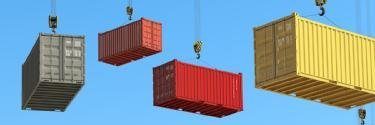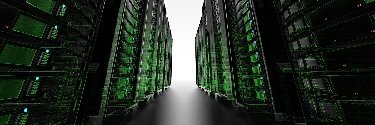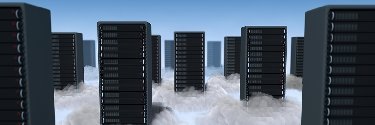Containers and virtualization
Containerization software is taking over across the IT industry as the new favored IT infrastructure, as it enables high-speed and high-efficiency platform and software performance. Learn about the technology, its leading tools and how to use it from experts.
Top Stories
-
Podcast
20 Nov 2025

Cloud-native platform engineering in the enterprise
The director of engineering for a Fortune 20 automotive company spoke on the latest cloud-native tools for platform engineering, and the challenges and opportunities ahead with AI. Continue Reading
By- Beth Pariseau, Senior News Writer
-
News
14 Nov 2025

Kubernetes AI progress in 2025 and the road ahead
Presentations at KubeCon 2025 detailed efforts since last year's conference to enhance support for AI on Kubernetes platforms and previewed what's ahead. Continue Reading
By- Beth Pariseau, Senior News Writer
-
News
25 Mar 2019

Kubernetes for Windows hits GA, with limitations
Kubernetes support for Windows nodes was declared stable in Kubernetes 1.14, but extensive fine print remains. Continue Reading
By- Beth Pariseau, Senior News Writer
-
News
22 Mar 2019

Kubernetes management for 'Minecraft' has enterprise IT traits
What do 'Minecraft' servers and enterprise databases have in common? In the realm of Kubernetes management, more than you might think. Continue Reading
By- Beth Pariseau, Senior News Writer
-
Tip
22 Mar 2019

5 Windows network drivers supported by containers
NAT is the default network for container applications, but there are four other available drivers. Each container network driver poses some limitations and must be used carefully. Continue Reading
-
Tip
21 Mar 2019

Multi-hypervisor environments provide cost savings, flexibility
Adopting multiple hypervisors might make more sense than going with a single vendor, depending on cost, the types of workloads you run, and your performance and reliability needs. Continue Reading
By- Brian Kirsch, Milwaukee Area Technical College
-
Tip
19 Mar 2019

Bare-metal vs. VM container deployment considerations
Consider your performance requirements, portability needs and what level of isolation and security you want when deploying containers in your environment. Continue Reading
By- Brian Kirsch, Milwaukee Area Technical College
-
Tip
19 Mar 2019

4 branch office server management best practices
Setting up a ROBO server involves specific hardware and software configuration considerations, such as ensuring redundancy and connectivity for remote management. Continue Reading
By -
Tip
14 Mar 2019

Use PowerShell Docker to manage Windows container components
Take advantage of the PowerShell for Docker module to easily create and manage Windows containers in your environment with this step-by-step installation guide. Continue Reading
-
Feature
14 Mar 2019

Market evolves to address container security issues
Container use is gaining traction in virtual environments, but containers present unique security challenges that vendors and organizations must overcome. Continue Reading
-
News
13 Mar 2019

F5-Nginx deal reflects mainstream trend toward microservices
F5 snaps up Nginx for cloud-native app support, and analysts predict a microservices gold rush as modern application architectures catch on in enterprise IT shops. Continue Reading
By- Beth Pariseau, Senior News Writer
-
Feature
13 Mar 2019

Container management tools must overcome limitations
As container adoption surges, the management tools organizations need to support these deployments at scale are still in their infancy. Continue Reading
-
Tip
08 Mar 2019

GitOps provides an answer for complicated IT deployments
Version control isn't a new concept in IT, but ops pros are applying it to distributed environments for declarative configuration management. Continue Reading
By- Tom Nolle, Andover Intel
-
Tip
06 Mar 2019

How to configure Windows container networking
The default network setting for Windows containers is Network Address Translation, but you can also set up a transparent Dynamic Host Configuration Protocol or non-DHCP network. Continue Reading
-
News
05 Mar 2019

Container security tools turn heads with expansion to hosts
Vendors that sell container security tools now face off against traditional security tool providers, as both vie for the attention of IT pros who look to fortify their cloud-native infrastructure. Continue Reading
By- Beth Pariseau, Senior News Writer
-
News
28 Feb 2019

Istio security drives Auto Trader UK move to GKE
The U.K.'s largest online automotive marketplace put Istio security features in place before it adopted containers and GKE, rather than the other way around. Continue Reading
By- Beth Pariseau, Senior News Writer
-
Tip
28 Feb 2019

Compare the pros and cons of container management tools
From the ever-popular to the obscure, evaluate different container management options based on the user interface, documentation, ease of use, available features and integrations. Continue Reading
By -
Tip
27 Feb 2019

What container management software features are important?
Because containers are easy to spin up, the infrastructure can quickly get out of hand. A tool that simplifies container management can help, if it provides certain capabilities. Continue Reading
By -
News
26 Feb 2019

VMware PKS adds Heptio IP, boosts container street cred
VMware adds bare-metal Kubernetes and an elite support squad from Heptio, but it's unlikely to get widespread interest with bespoke container orchestration on premises. Continue Reading
By- Beth Pariseau, Senior News Writer
-
Tip
25 Feb 2019

Where container infrastructure and management investments yield ROI
Containers are efficient and flexible, but these benefits can come with a hefty price tag. Ensure these elements are in the container budget to escape unexpected charges. Continue Reading
By- Kurt Marko, MarkoInsights
-
Tip
20 Feb 2019

Determine the cost of app customization in the cloud
Cloud applications are like icebergs: There's a lot users don't see below the surface. One apparently small change could have a massive ripple effect on operations. Continue Reading
By- Brian Kirsch, Milwaukee Area Technical College
-
Tip
15 Feb 2019

Major I/O virtualization vendors and technologies explained
Technologies that virtualize I/O components offer a number of additional capabilities, such as direct memory access remapping and network queuing for each VM. Continue Reading
By- Stephen J. Bigelow, Senior Technology Editor
-
News
14 Feb 2019

Container security tools pitch service mesh integrations
Container defense in depth is a hot topic, and some IT pros approach it with a combination of third-party container security tools and service mesh security features. Continue Reading
By- Beth Pariseau, Senior News Writer
-
News
14 Feb 2019

Linkerd vs. Istio fray dominates service mesh battle
Linkerd's maintainers admit it has a narrower range of features than buzz machine Istio. But after failed attempts to set up Istio, some early adopters believe less is more. Continue Reading
By- Beth Pariseau, Senior News Writer
-
Tip
13 Feb 2019

GPU virtualization evolves with new chip types on the horizon
GPU-makers Intel, AMD and Nvidia all provide virtualization support; the next step is to merge CPU and GPU functionality to handle both application and math/graphics-related tasks. Continue Reading
By- Stephen J. Bigelow, Senior Technology Editor
-
Tip
12 Feb 2019

Adjust IT team dynamics for a cloud-native approach
As enterprises set their cloud-native strategy, they'll need to navigate major changes -- both from a technical standpoint and in terms of IT team structure and management style. Continue Reading
-
News
11 Feb 2019

Container security vulnerability prompts call to patch runC
The discovery of a container utility flaw means IT pros must patch most container runtimes, as well as practice defense in depth and beware of strangers with sketchy container images. Continue Reading
By- Beth Pariseau, Senior News Writer
-
News
08 Feb 2019

Rancher's Kubernetes multi-cluster app support fuels IT debate
To federate or not to federate cloud-native apps? As Kubernetes becomes ubiquitous, that is the question that more IT shops must answer. Continue Reading
By- Beth Pariseau, Senior News Writer
-
Tip
07 Feb 2019

Evaluate the Mesos architecture for massive container deployments
In addition to supporting large-scale IT deployments, Mesos takes a unique approach to data center and cloud resource pools that can benefit both containerized and noncontainerized apps. Continue Reading
By- Tom Nolle, Andover Intel
-
Tip
04 Feb 2019

Evaluate remote office/branch office technology trends
Traditional data center technology, including SD-WANs, HCI, and virtual backup and disaster recovery devices, often supports remote and branch offices. Continue Reading
By -
Tip
30 Jan 2019

How NFV architecture works
NFV enables organizations to virtualize operations and replace network equipment such as routers and switches. It's built on three components: VNFs, NFVI and the MANO framework. Continue Reading
-
Tip
25 Jan 2019

Get informed of the risks associated with docker.sock
Container security is a new area for many IT admins, and enterprise IT organizations can easily set up Docker in ways that compromise access control -- potentially exposing the host. Continue Reading
By- Alexander S. Gillis, Technical Writer and Editor
-
Tip
25 Jan 2019

How to configure a gMSA for Windows containers
You must start Windows containers with a CredentialSpec file and gMSA name to enable applications to use gMSA credentials in place of local system and network service accounts. Continue Reading
-
News
21 Jan 2019

VMware-Heptio roadmap to refine enterprise Kubernetes
Heptio founder Craig McLuckie, now VP of R&D at VMware following a 2018 merger, anticipates hard work ahead to get enterprises to adopt Kubernetes in their production environments. Continue Reading
By- Beth Pariseau, Senior News Writer
-
News
17 Jan 2019

VMware and Pivotal put NSX spin on Kubernetes security
VMware and Pivotal mix NSX network segmentation into PKS 1.3 to appeal to large, advanced users of vSphere and Kubernetes who manage multi-tenant container clusters. Continue Reading
By- Beth Pariseau, Senior News Writer
-
Tutorial
14 Jan 2019

Control Docker containers with the Nginx load balancer
Docker is an efficient container platform, but it isn't perfect. Follow this Nginx load balancer tutorial to provide your container environment with high availability across multiple nodes. Continue Reading
By -
Tip
10 Jan 2019

Enforce container ecosystem consistency in 4 steps
Lightweight apps are easy to containerize, but monoliths need more work. Expert admins can bring those heavyweight apps into the fold, whether they were made for containers or not. Continue Reading
By- Tom Nolle, Andover Intel
-
Tip
10 Jan 2019

Use branch office servers to support infrastructure expansion
A remote office setup requires infrastructure that meets performance, cost and space demands. Depending on the vendor, a microserver will likely provide the best compromise. Continue Reading
By- Brian Kirsch, Milwaukee Area Technical College
-
Tip
09 Jan 2019

Kata Containers, gVisor offer more secure container strategies
Kata Containers and Google gVisor present different approaches to using VMs for container security. Evaluate their advantages to get insight into the future of container security. Continue Reading
-
Feature
28 Dec 2018

Major acquisitions, Kubernetes evolution top IT news in 2018
In the second half of 2018, IT industry vendors and their users worked to tame Kubernetes and containers, and inject open source innovation into tried-and-true enterprise IT. Continue Reading
By- Emily Mell, Former Site Editor
-
Feature
26 Dec 2018

Bookmark 10 popular tips on containers and Kubernetes
Should we go with an open source or commercial option? What about DevOps? These 10 essential tips explain how containers fit into complex modern IT environments. Continue Reading
By- Meredith Courtemanche, Director of Editorial Training
-
Tip
19 Dec 2018

Hyper-V Integration Services and VMware Tools improve OSes
Hyper-V Integration Services and VMware Tools are similar utilities with a few small differences. One is that Hyper-V Integration Services supports fewer guests than VMware Tools. Continue Reading
By -
Opinion
17 Dec 2018

Expect more container evolution, growth in 2019
Containerization shows no sign of winding down. With technologies, product options and providers focused on technological improvement, container ecosystems will develop rapidly in the coming year. Continue Reading
By- Tom Nolle, Andover Intel
-
News
14 Dec 2018

Istio service mesh tradeoffs prompt caution among IT pros
Istio can boost the security and observability of Kubernetes environments, but some IT pros question whether the perks are worth a steep learning curve. Continue Reading
By- Beth Pariseau, Senior News Writer
-
News
13 Dec 2018

Enterprise SREs guide devs through Kubernetes in production
Behind most enterprise developers that own and operate the services they create stands a platform engineering team that's teed up Kubernetes in its most manageable form. Continue Reading
By- Beth Pariseau, Senior News Writer
-
News
13 Dec 2018

Kubernetes 1.13 stabilizes storage, but Windows GA delayed
IT pros with Kubernetes in production welcomed stable releases of cluster install and container storage utilities in version 1.13, but they'll have to wait for some key features. Continue Reading
By- Beth Pariseau, Senior News Writer
-
Tip
13 Dec 2018

Manage large volumes of VM data with these storage tactics
Admins can effectively virtualize large servers with storage tiering and disk allocation, but they must be wary of potential IOPS and redundancy issues. Continue Reading
By- Brian Kirsch, Milwaukee Area Technical College
-
News
11 Dec 2018

Kubernetes security issues raise concerns for enterprise shops
As Kubernetes enters the enterprise mainstream, it has early adopters abuzz about security issues in the platform and the containers it orchestrates. Continue Reading
By- Beth Pariseau, Senior News Writer
-
Feature
05 Dec 2018

Prepare for VM-to-cloud workload migration
Migrating VMs to the cloud can be relatively straightforward if you lay the groundwork to meet workload and vendor requirements. Follow these steps to prepare for the migration. Continue Reading
By- Ryann Burnett, Executive Managing Editor
-
News
04 Dec 2018

Microsoft and Docker CNAB takes aim at distributed computing
Microsoft and Docker want to push container-like abstraction up the stack with the CNAB open source spec, which has piqued enterprise interest in its early stages. Continue Reading
By- Beth Pariseau, Senior News Writer
-
News
04 Dec 2018

Kubernetes security vulnerability reveals fractured market
Enterprises that pay for Kubernetes support will respond differently to this week's critical security vulnerability than lean DevOps teams that use upstream distributions. Continue Reading
By- Beth Pariseau, Senior News Writer
-
Feature
30 Nov 2018

Improve microservices management in operations with 5 tips
Distributed applications are the future of IT, thanks to their scalability and flexibility, but growth means growing pains. Tackle microservices issues with this expert advice. Continue Reading
By- Emily Mell, Former Site Editor
-
News
30 Nov 2018

Istio service mesh vies for lead in microservices market
Istio's integration into Google Cloud will give it momentum, but service mesh competition remains fierce, as HashiCorp Consul makes strong inroads with early adopters. Continue Reading
By- Beth Pariseau, Senior News Writer
-
Tip
30 Nov 2018

Meet data center compliance standards in hybrid deployments
Data center compliance is a moving target that shifts with standards and technologies. Don't get sidetracked by the complexity -- prioritize performance while maintaining compliance. Continue Reading
By- Brian Kirsch, Milwaukee Area Technical College
-
Answer
28 Nov 2018

Is read-only mode a viable approach to container hardening?
Can containers work in read-only mode, and how does this setup make a difference in security hardening? Continue Reading
By- Alexander S. Gillis, Technical Writer and Editor
-
Opinion
21 Nov 2018

What's next for VMs vs. containers as isolation, performance evolve?
With advances from Docker, Kubernetes and other container technologies, an ecosystem is emerging that threatens the existence -- or at least importance -- of VMs in enterprise IT orgs. Continue Reading
By- Tom Nolle, Andover Intel
-
News
15 Nov 2018

Container security tools push multi-cloud closer to reality
Container security tools, such as StackRox and Aqua Security, offer DevOps shops that want multi-cloud portability a centralized way to reduce the risk of complex infrastructures. Continue Reading
By- Beth Pariseau, Senior News Writer
-
News
09 Nov 2018

Docker on Windows Server helps legacy apps, with caveats
Windows-only Docker Enterprise Edition prospects struggle with Linux requirements and a shift to a container-first mindset as they plan to modernize legacy Microsoft applications. Continue Reading
By- Beth Pariseau, Senior News Writer
-
Tutorial
07 Nov 2018

Get started with your first Docker container build
Many admins have a purely theoretical understanding of containers -- despite the technology's seeming ubiquity. This tutorial offers container newbies the opportunity to get hands-on. Continue Reading
-
News
07 Nov 2018

Kubernetes on VMware gains a lifeline with Heptio acquisition
VMware's Heptio buy brings it Kubernetes chops that will help it make a multi-cloud bid, but it will struggle to raise its profile in open source container management, industry watchers predict. Continue Reading
By- Beth Pariseau, Senior News Writer
-
News
30 Oct 2018

IBM Red Hat acquisition roils open source container management
IBM agreed to buy Red Hat with Kubernetes in mind for its multi-cloud management strategy, and it'll have far-reaching implications for the open source container management community, especially Cloud Foundry. Continue Reading
By- Beth Pariseau, Senior News Writer
-
Feature
26 Oct 2018

3 virtualization infrastructure design rules to shape your deployment
Admins can improve virtual infrastructure design by focusing their deployments on transparency and flexibility and critically evaluating emerging technologies. Continue Reading
By- Nick Moore, Assistant Site Editor
-
Feature
25 Oct 2018

Cloud and containers rewrite monitoring and management rulebooks
IT performance management is tricky when it stretches as big as the public cloud and scrunches as small as a microservice. IT ops techniques must change to keep up. Continue Reading
By- Mike Matchett, Small World Big Data
- 25 Oct 2018
- E-Zine 25 Oct 2018
-
Guide
24 Oct 2018

An introduction to containers and orchestration for IT admins
Given containers' radical effect on provisioning, resource planning and portability, an IT team's container education should begin well before the first one spins up on a host OS. Continue Reading
-
Tip
22 Oct 2018

Container hosting requires in-depth service network plans
Microservices and containers complement each other with scalability and flexibility. But they can also compound network addressing problems in production without proper precautions. Continue Reading
By- Tom Nolle, Andover Intel
-
Tip
22 Oct 2018

Direct NVMe performance with virtualization and storage tiers
Non-volatile memory express technologies have a host of benefits, but admins must use virtualization and storage tiers to best target NVMe performance boosts. Continue Reading
By- Brian Kirsch, Milwaukee Area Technical College
-
Tip
22 Oct 2018

Hyper-V vs. vSphere high availability features
Compare VMware vSphere and Microsoft Hyper-V HA approaches to see how they keep VMs and other workloads online when a host server crashes. Continue Reading
By -
Tip
19 Oct 2018

Top server sizing strategies for VMs
How many VMs can you put on a server? That depends on whether your hardware and virtual environment are well-matched. This tip offers four criteria to select the right servers. Continue Reading
By- Alexander S. Gillis, Technical Writer and Editor
-
Answer
12 Oct 2018

How do you optimize a virtual database server?
Avoid virtual database performance hiccups by incorporating monitoring and alerting tools. Stay abreast of any issues and head them off before users encounter them. Continue Reading
By- Alexander S. Gillis, Technical Writer and Editor
-
Answer
12 Oct 2018

How do you virtualize database servers?
Virtualizing database servers has consolidation and efficiency benefits, but you must carefully choose which databases to virtualize and which tools to virtualize with. Continue Reading
By- Alexander S. Gillis, Technical Writer and Editor
-
Tip
11 Oct 2018

Bevy of Microsoft containers range from cloud to captive workloads
Windows wasn't always an ideal environment for containers, but recent changes offer a wealth of options, including those for Windows Server and the Azure public cloud. Continue Reading
By -
Tip
04 Oct 2018

Incorporate NIST security and virtualization recommendations
Review NIST virtualization security recommendations with this overview of hypervisor security guidelines, including tips on VM lifecycles and hypervisor platform management. Continue Reading
-
Feature
03 Oct 2018

Tame the virtualization infrastructure management beast
IT administrators must manage virtual infrastructure requirements, such as patches, reboots and component lifecycles, to create and maintain an efficient data center. Continue Reading
By- Nick Moore, Assistant Site Editor
-
Tip
02 Oct 2018

Understand how Docker works in the VM-based IT world
With advantages for microservices architectures, disaster recovery and utilization density, among other areas, containers should step out from virtual machines' shadow. Continue Reading
-
News
02 Oct 2018

Kubernetes TLS tweaks whet user appetite for easier management
Kubernetes TLS bootstrap improvements in version 1.12 tackle container management complexity, and users hope there's more where that came from. Continue Reading
By- Beth Pariseau, Senior News Writer
-
Feature
27 Sep 2018

Is 'Continuous Delivery with Docker and Jenkins' right for you?
If your IT organization is ready to bring DevOps from mindset to tool set, containers and CI/CD are probably on the agenda. See what you'll learn from Rafal Leszko's book on Docker and Jenkins to advance a pipeline project. Continue Reading
By -
Tip
25 Sep 2018

Grasp container basics to plan enterprise adoption
To transition from virtualization that mimics hardware to a new level of portable, isolated workloads, absorb key tenets of containers and where container deployment differs from VMs and cloud instances. Continue Reading
By- Tom Nolle, Andover Intel
-
Answer
24 Sep 2018

Docker for Windows shows permission errors on shared volumes
Understand and work around one of the more common Docker for Windows errors -- permissions for shared volumes -- to read, write and execute to the shared volume. Continue Reading
By- Stephen J. Bigelow, Senior Technology Editor
-
Answer
21 Sep 2018

Use nested virtualization to run a container in a VM
IT administrators should familiarize themselves with the benefits and limitations of using nested virtualization to run containers in VMs before implementation. Continue Reading
By- Stephen J. Bigelow, Senior Technology Editor
-
News
13 Sep 2018

IT experts exchange container security tips and caveats
Real-world container security requires users to dig in to the finer points of container, host, Kubernetes and application configurations. Continue Reading
By- Beth Pariseau, Senior News Writer
-
Tip
12 Sep 2018

Mix test and production environments with hyper-convergence
Despite the enhanced separation that hyper-converged infrastructure can offer, it's better to mix environments and use rules to create a hardware-independent workload balance. Continue Reading
By- Brian Kirsch, Milwaukee Area Technical College
-
Feature
10 Sep 2018

The future of composable infrastructure and virtualization
Composable infrastructures -- frameworks of compute, storage and network resource services -- will still make use of virtualization to run applications. Continue Reading
-
Tip
04 Sep 2018

Build a secure Docker host environment on Linux systems
In the cutting-edge technology world of containers, don't lose sight of the fundamental security best practices that protect workloads and minimize attack surfaces. Continue Reading
By -
News
30 Aug 2018

Third-party Kubernetes tools hone performance for database containerization
Kubernetes tools look to carve out a market niche in database containerization with performance monitoring and quality-of-service management features. Continue Reading
By- Beth Pariseau, Senior News Writer
-
News
29 Aug 2018

Kubernetes community takes over massive Google test bed
Google will donate $9 million in GCP resources and undergo a three-year handoff process to put a massive Kubernetes test bed under CNCF control. Users wonder, what happens next. Continue Reading
By- Beth Pariseau, Senior News Writer
-
Tip
28 Aug 2018

Build an IT maintenance plan around infrastructure needs
Don't delay maintenance reboots. It's easy to forget to reboot hosts, tools and drivers, so use a reboot schedule to ensure your infrastructure remains functional. Continue Reading
By- Brian Kirsch, Milwaukee Area Technical College
-
News
27 Aug 2018

Free Kubernetes security tools broaden enterprise choices
Kubernetes security tools give enterprise IT shops strategic approaches to container security that go beyond shoring up individual container instances. Continue Reading
By- Beth Pariseau, Senior News Writer
-
E-Zine
21 Aug 2018

Microservices challenges fluster even the sharpest IT shops
Freed from the needs of a large and traditionally structured application, a development team working in the microservices architecture builds apps via services that can be more easily isolated, manipulated, updated and fixed. Still, developers and IT professionals should expect to encounter some microservices challenges as they make the switch.
One of the reasons IT organizations turn to the microservices architecture is to free themselves of the many unavoidable burdens inherent in monolithic applications. When done well, building in modules can greatly ease those burdens.
Among the biggest microservices challenges is the need to resist those habits formed when working in more traditional architectures. Those bygone ideas simply won't mix with the requirements of microservices. Mistakes and those old ways of thinking will get in the way of results and possibly even sink a microservices project.
Dependencies and configurations are too easily mishandled -- especially if development teams approach them with traditional and outdated IT mindsets. Some organizations will stumble in their microservices efforts by creating a microservice that's simply too small for the task at hand; others will encounter trouble by building them too large.
There is plenty that can go wrong when you are getting started in microservices. Bad things will result not necessarily from technical failings, but from a failure of imagination and plain old inertia. Applying the wrong thinking to microservices is, in effect, how an organization inadvertently sabotages an initiative.
TechTarget's Jan Stafford delves into these microservices challenges with her feature story in this issue of Modern Stack. She talks with experts about where these projects go wrong and how the missteps can be avoided.
Also in the new Modern Stack are features and columns that explore the role emotional intelligence plays in organizational change, how geography and specialty affect a tech worker's salary, why infrastructure as code deserves a closer look, how advances in big data may punish those who wait too long to get started, and why the pace of cloud innovation may begin to slow as hyperscale providers focus more on keeping their enterprise customers happy.
Continue Reading -
Tip
08 Aug 2018

Should you virtualize an edge computing server?
The need to pack a lot of compute power into a small package leaves many wondering whether containers and serverless frameworks could replace virtualization at the edge. Continue Reading
-
News
03 Aug 2018

IT pros debate upstream vs. packaged Kubernetes implementations
As IT vendors race to package Kubernetes implementations, their fiercest competition is not from other vendors, but from pure upstream code and DIY container orchestration projects. Continue Reading
By- Beth Pariseau, Senior News Writer
-
Tip
03 Aug 2018

Support a guest security policy with endpoint hardening
Guest security relies not only on a series of tools and best practices, but also on a security mindset that starts with endpoint hardening and follows the deployment of every VM. Continue Reading
By- Brian Kirsch, Milwaukee Area Technical College
-
Answer
03 Aug 2018

Can container communication cross over to noncontainerized apps?
Can an application have Python as a container, run SQL queries on an external Microsoft SQL database and publish the results on an Apache web server container? Continue Reading
By- Chris Moyer, ACI Information Group
-
Tip
25 Jul 2018

Fail at scale: Build failure into virtual infrastructure design
It's better to be over-prepared than surprised. Design virtual infrastructure around the possibility that it might fail and have a plan in mind for when it does. Continue Reading
By- Brian Kirsch, Milwaukee Area Technical College
-
News
19 Jul 2018

GCP Marketplace beats AWS, Azure to Kubernetes app store
Google is the first major public cloud provider to sell prepackaged apps for container orchestration clusters, but expect AWS and Azure to follow quickly with Kubernetes marketplaces of their own. Continue Reading
By- Beth Pariseau, Senior News Writer
-
News
19 Jul 2018

Container security emerges in IT products enterprises know and trust
Established IT security vendors add containers to their repertoire, and IT pros must decide between trusted platform integration and the latest features from startups. Continue Reading
By- Beth Pariseau, Senior News Writer
-
Tip
06 Jul 2018

Istio service mesh tech boosts Kubernetes' work, with trade-offs
Why wouldn't IT teams use a tool that enables developers to focus on writing app code and operations to focus on IT resources? For all its benefits, Istio does require a study on pros and cons. Continue Reading
-
Answer
28 Jun 2018

Can virtual SAN performance create VM performance issues?
Monitor the performance of your VSAN and VMs to ensure one isn't affecting the other. Performance metrics and alerts can make it easy to spot VSAN issues before they affect VMs. Continue Reading
By- Stephen J. Bigelow, Senior Technology Editor
-
Answer
27 Jun 2018

How can VSAN network requirements affect performance?
Virtual SAN network configuration problems can detract from performance and availability. Update your drivers and check that no security products are blocking connections. Continue Reading
By- Stephen J. Bigelow, Senior Technology Editor
-
Answer
26 Jun 2018

How do VSAN compatibility issues affect performance?
Effective VSAN performance requires compatible hardware and software. Review compatibility guides and use diagnostic tools to keep your system updated. Continue Reading
By- Stephen J. Bigelow, Senior Technology Editor
-
E-Zine
21 Jun 2018

Will the Kubernetes sidecar deliver container happiness?
IT teams tasked with managing containerization -- or that might be imagining a future full of containers -- may want to take a look at Kubernetes sidecar software. This proxy technology built into the service mesh architecture could prove useful in the ongoing battle to solve network management troubles.
Proponents tout the technology's ability to sort out the complicated network relationships that result from the use of containers and microservices. The Kubernetes sidecar technology found in service mesh technology first proved useful in giant online operations where conventional networking configurations weren't up to the task of managing microservices. But is there that same type of usefulness for organizations not named Twitter and Google? Does an IT shop that's not on the leading edge of DevOps need to look at Kubernetes sidecar software?
That's the question TechTarget's Beth Pariseau takes up in this edition of Modern Stack. She explores how the service mesh architecture works and how realistically its benefits might be applied to real-world IT scenarios. Some will see these advanced capabilities as unnecessary, at least for their current configurations. Others may be intrigued by the enhancements to security and greater control of traffic afforded by Kubernetes sidecar software in the mesh architecture.
If service mesh isn't in your near-term plans, it might be something to work toward, especially if your business intends to do more with containers and microservices in the years to come.
Also in this issue are features and columns delving into the practicality of the serverless approach; how developers influence an organization's decisions about cloud platforms; where containers, cloud computing and other emerging strategies affect application componentization practices; what no-code/low-code trends mean for the pace of application development; and how managing cloud spending can easily become a source of frustration even for those organizations that consider themselves especially prudent planners.
Continue Reading

